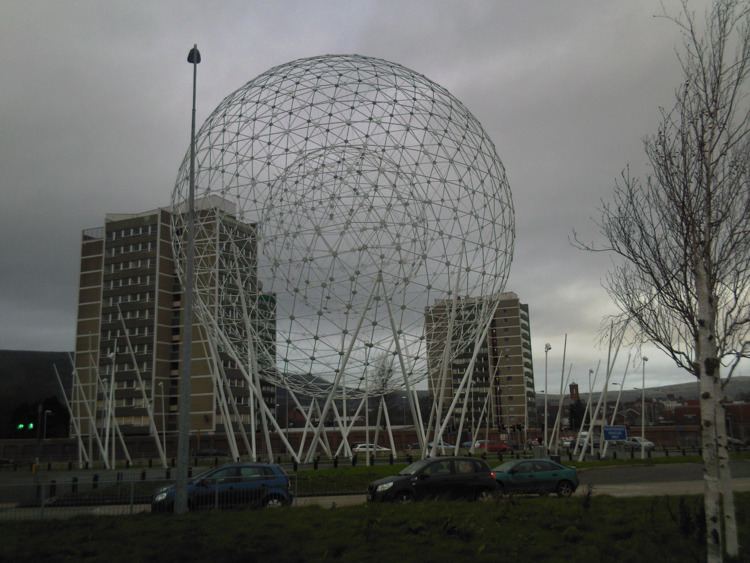Type Steel Created 2011 Media Aluminium, Steel | Province Ulster Year 2011 | |
 | ||
Dimensions 37.5 m × 30 m (123 ft × 98 ft) Similar Monument to the Unknown, Irish Republican History M, Beacon of Hope, Spirit of Belfast, Belvoir Park Forest | ||
Rise of the tomb raider the lost city headless statues vandal challenge
RISE is a concept £400,000 public art spherical metal sculpture in Belfast by Wolfgang Buttress. It is 37.5 metres (123 ft) high and 30 metres (98 ft) wide and was constructed in early 2011 in the centre of the Broadway roundabout, at the junction of the Westlink and M1 motorway, a main gateway to the city where (as of 2009) more than 80,000 cars on average flow past it each day. It is informally known as The Balls on the Falls as this junction also gives access to the Falls Road area via Broadway.
Contents
- Rise of the tomb raider the lost city headless statues vandal challenge
- rise sculpture installation matt mcconnell
- Construction
- Structure
- Competition
- Funding
- Workshop
- References
RISE is visible for miles around the city. The area is part of a multimillion-pound road improvement programme. It is the biggest public art sculpture in Belfast. Work on RISE was due to begin in August 2009 and end in October 2009, however due to delays the completion date was changed to March 2011. It was finally completed in September 2011, nearly two years behind the original schedule. When completed it became Belfast's largest public artwork.
rise sculpture installation matt mcconnell
Construction
The globe-shaped, white and silver steel sculpture is a representation of a new sun rising to celebrate a new chapter in the history of Belfast.
The sculptor encouraged input from local people living near the landmark sculpture. He held creative workshops with groups from the Donegall Road and St James' areas of Belfast.
Belfast City Council coordinated the plans for the new sculpture with strong support and funding from the Department for Social Development (Regeneration Directorate) and the National Lottery, through the Big Lottery Fund, through the Arts Council of Northern Ireland as well as advice and assistance from Department for Regional Development Roads Service.
Construction of the piece was challenging. It was made by local steel company M Hasson and Sons Ltd in Rasharkin.
Structure
The artwork is made of two geodesic spheres supported on slender stanchions. The engineers, Price & Myers, made extensive use of the work done by Buckminster Fuller in the 1950s. The outer sphere has a geodesic frequency of 8. It required 1920 tubes to be bolted together. Tensigrity – another concept developed by Buckminster Fuller – is used to hold the inner sphere in position.
Competition
Buttress was selected after intense competition from more than 40 artists from the United Kingdom, the Republic of Ireland and internationally.
There had been a previous competition and previous winner: Trillian by Ed Carpenter. However, plans were scrapped amid escalating steel costs, which threatened to raise the price of the sculpture, originally agreed at £400,000, to £600,000.
Funding
The sculpture was funded by Belfast City Council, the Department for Social Development and the National Lottery through the Arts Council of Northern Ireland.
Workshop
In October 2009 school children and senior citizens from across Belfast worked with New Belfast Community Arts Initiative, local writers and the artist, Buttress, to look at plans for Rise, and to learn more about creative expression through workshops. The workshops were designed to give people an insight into the process involved in creating the sculpture, to give an opportunity to reflect on what it symbolises for Belfast, and to offer their own creative insights in response.
